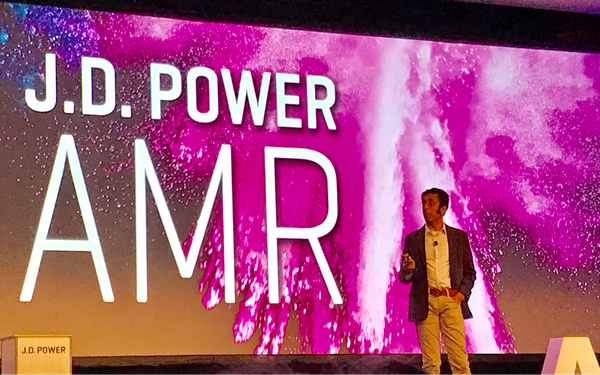automotive
J.D. Power Cautions Automakers Against Relying On Incentives
- by Tanya Gazdik , November 7, 2017

LAS VEGAS — Although the auto industry is facing flat sales and increasing inventories, incentives are not the solution, says top J.D. Power executive.
“The marketplace is a battleground,” says Thomas King, senior vice president, data and analytics department at J.D. Power. “That might sound dramatic but it’s a tough market. It’s ultra-competitive. We’re dealing with sales declines and the industry focuses on sales as a matter of success.”
New products, preferably in the SUV and truck categories, are important to helping to increase sales. But automakers still must differentiate themselves.
“There are two ways to solve the problem,” King says, offering that automakers can either spend their money on promotional activities and marketing or incentives. “Incentives are a huge problem” because they take a substantial portion away from profits. In 2017, incentives average about $4,000 per vehicle compared to $3,000 in 2013.
advertisement
advertisement
“Incentives are effective and immediate, but are they efficient?” King asks.
King, along with J.D. Power’s Bernardo Rodriguez, chief digital officer, and Amit Aggarwal, digital marketing analyst, offered their thoughts about the state of the industry at the recent J.D. Power Automotive Marketing Roundtable. About 200 automotive marketing executives from around the country gathered to hear executives from automakers including Ford, Mercedes-Benz, Mazda and Honda. But there were also presentations from top marketers at non-auto companies including Amazon, Microsoft, the NFL and the Ritz-Carlton.
“Historically, we’ve focused on keynote speakers that are connected to the auto industry,” Rodriguez tells Marketing Daily. “We provide consumer insight to several non-automotive industries and decided that, with an event theme centered on brand power and customer experience, it would be enlightening to hear from experts outside the automotive industry. The challenges they face, while being in non-automotive industries, are quite similar to those faced in the automotive space.”
With the 2018 auto sales forecast not looking much better than the current year, automakers are being forced to rethink how they engage and build relationships with customers.
Customers spend an average of 16 weeks shopping for a new vehicle, Aggarwal says. More than half of that time is spent online and they don’t connect with a dealer until 6.4 weeks before purchase. “They are hiding from you for 9.6 weeks,” he says.
The average customer is considering fewer vehicles and shopping fewer dealerships. Even during the online portion of shopping, they are visiting fewer websites.
Aggarwal called the current system for buying vehicles an “antiquated process” and said many consumers would pay for the convenience of buying online.
“We can order everything else online, but we still have to step on a dealer lot to buy a car,” he says. The average time spent at a dealership to buy a car is 4.75 hours, which many consumers, particularly Millennials, feel is a waste of time.
“There’s opportunity for those that can bring about a real change in the customer experience,” Aggarwal says.




